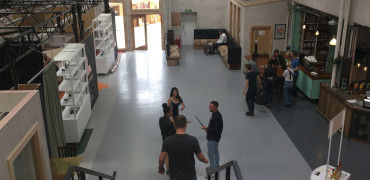Sustainable, sustainably and sustainability are three buzzwords that I’ve heard more and more over the past few years. Is this business model sustainable? Do you shop sustainably? Does your organisation have sustainability at the forefront of their minds?
In so many situations, from micro to macro, we throw the ‘Sustain’ term into conversation to emphasis whether or not the strategy, the building, the lifestyle or the mind-set considers a vast array of factors.
In actual fact there seems to be many different ideas regarding what the three S’s encompass, for example, does it connect with the environment; does it consider economic, social cultural, technological and political factors? Does it meet the needs of the present without compromising the needs of the future?
Just take a look at the Sustainable Development Goals set out by the United Nations in 2015…
When it comes to design, development and construction in the built environment however, these buzzwords are becoming increasingly important, so with all this in mind, I’m going to look at what the S’s specifically mean in this industry.
With sustainable development we can begin to live sustainably and end up achieving sustainability because we have improved the quality of human life without compromising our eco-system.
Energy efficiency
Depending on the location of the building; the environment, the regulations and the client’s requirements, energy efficient systems make a massive contribution to sustainable development. Not only can it future-proof a building (if the right solution is applied), it can also lower maintenance and energy costs and make a significant impact on the health and wellbeing of the occupants.
A commercial heat pump system for example can utilise heat energy from the ground (if ground source) or heat energy from the air (if air sourced) only requiring an electrical connection. This would mean that the building was utilising one of the most energy efficient systems currently available and as the national grid gets greener, it’s a win-win.
The catch 22 in this situation however, is that as the world gets hotter, the requirement for more effective cooling systems increases. Heating and cooling systems can consume large amounts of energy in buildings, which is why it’s important to highlight to everyone in the building lifecycle what the right choices are.
With cooling and heating systems, quality and premium technology should not be overlooked because often premium brands develop the solution with the future and sustainability in mind. For example, Hybrid VRF air conditioning has been developed for large scale buildings and utilises both a lower GWP (Global Warming Potential) refrigerant and water, reducing overall system refrigeration volume and eliminating refrigeration gases inside the occupied spaces. In essence it uses water to deliver efficient, effective and comfortable indoor temperature.
Another important element to energy efficiency in a building is the control. All HVAC and electrical systems require some form of control mechanism and in most cases they include features that allow users to adjust the systems to optimise energy efficiency and maximise performance. This includes night set back, scheduling and energy monitoring.



